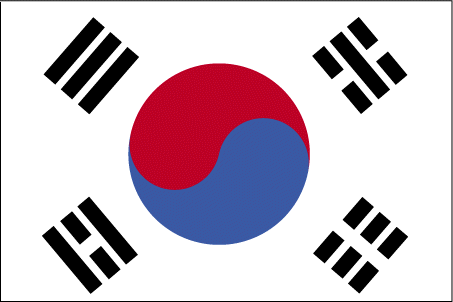South Korea Flag Meaning & Details
17 VISITORS FROM HERE!| South Korea Flag |
 |
| Flag Information |
- white with a red (top) and blue yin-yang symbol in the center
- there is a different black trigram from the ancient I Ching (Book of Changes) in each corner of the white field
- the South Korean national flag is called Taegukki
- white is a traditional Korean color and represents peace and purity
- the blue section represents the negative cosmic forces of the yin, while the red symbolizes the opposite positive forces of the yang
- each trigram (kwae) denotes one of the four universal elements, which together express the principle of movement and harmony
|
Learn more about South Korea »
Source: CIA - The World Factbook
 Previous Country | Next Country
Previous Country | Next Country  » Back to Flag Counter Overview
» Back to Flag Counter Overview
 Previous Country | Next Country
Previous Country | Next Country  » Back to Flag Counter Overview
» Back to Flag Counter Overview